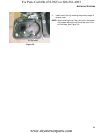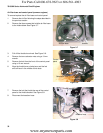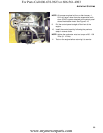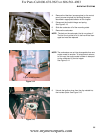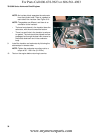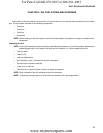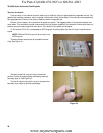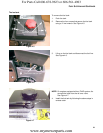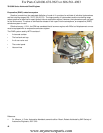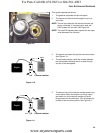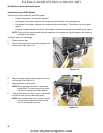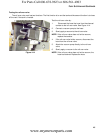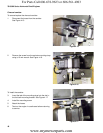
FUEL SYSTEM AND GOVERNOR
39
Fuel tank vent
The fuel tank vent performs the important task of allowing air into the fuel tank. As fuel is being used by the
engine, the fuel level in the tank drops. The dropping fuel level then creates a vacuum in the tank. If the fuel tank
could not draw air through the vent, the vacuum would prevent the fuel from getting to the carburetor. The vent is
located in the fuel cap.
See Figure 4.3.
NOTE: All summer engines built on or after January 1, 2011 will have an evaporative emissions (EVAP) sys-
tem that the fuel tank vents through, not the fuel cap. Refer to the evaporative emissions section of this
chapter to understand how this system works and how to test it.
To test the cap vent:
1. Remove the fuel cap.
2. Clean off the vent.
3. Blow air into the vent hole. The air should blow throw the vent with little back pressure.
4. Suck air through the vent hole. Air should freely enter through the vent.
• Replace the cap if the vent builds pressure or restricts air movement.
• A cap that maintains pressure will cause the engine to run rich as the fuel in the tank heats and expands,
forcing it’s way past the float valve in the carburetor.
• A cap that maintains vacuum will cause the engine to run lean as the fuel is depleted and no air comes in
to replace it.
• The two conditions may both be present, but the symptoms vary with fuel, fuel level, and operating condi-
tions.
• A bad fuel cap vent usually presents as a “Runs and quits” scenario.
Figure 4.3
Fuel cap
Vent
For Parts Call 606-678-9623 or 606-561-4983
www.mymowerparts.com



